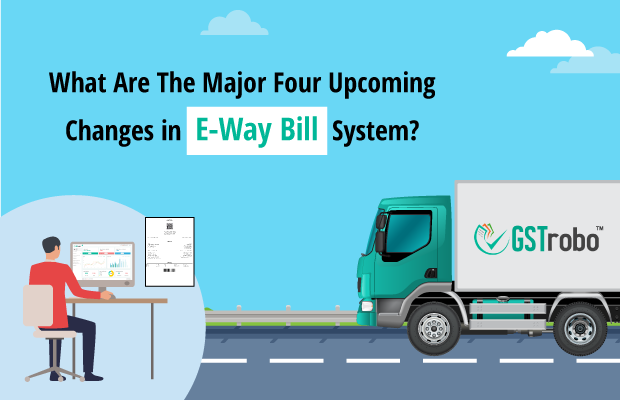Four Major Changes in E-Way Bill System!
Almost everyone is familiar with E-Way Bills. The system has been launched to simplify the taxation on the movement of goods, though, yet there are some practical challenges that need to be addressed.

A few days back, the GST council debated on some much-needed changes in the GST e-way bill. These changes will put E-way bill roadblocks aside that were earlier hampering the business transactions. The government has come up with such major practical changes in the system that will make it simpler than before. So, with the application of these changes, the majority of E-way Bill issues can be overcome easily.
In this blog, we will put forward to you these 4 upcoming e-way bill changes, which you should absolutely know in order to have a seamless e-way bill experience.
4 Major Upcoming Changes in E-way Bill System
1. Auto Calculation of the Route Distance Through PIN code
From Now onwards, the e-way bill system is being authorized to auto calculate the route distance for the transaction of commodities, founded via their PIN codes of source, & registered destination spot. All in All, the upcoming e-way bill changes will ascertain that the system will display & calculate the actual distance b/w the consignee address & the supplier.
The user can ingress the actual distance as per his transaction of commodities, but it will be confined, to a maximal of 10% more than the expressed distance for the entry. This route distance calculation b/w spot & the source will use data from multiple electronic sources.
This data will employ several attributes, such as- average speed, traffic data, the direction of travel, and road class, etc. These attributes are selected from the traffic that is search on expressways, district highways, state highways, national highways, as well as the major roads inside of the cities.
If anyhow, wrong PIN Codes have been entered by the user then the auto alert will remind you about Invalid Pin Code.
2. Blocking the Interstate transactions for composition dealers
As per upcoming changes, now composite taxpayers will not be permitted for interstate transactions. They will not get permissions to generate E-Way bills further. Furthermore, under SGST or CGST, their interstate supplies will not be taxed. Even the Tax Invoice document will not be enabled for them.
3. E-way bill Extention When the Consignment is in Transit
With the need to extend E-Way Bill in case the goods are still in transit, the upcoming regulation will consist of its principle as well.
Transit here means, goods are either in the warehouse or on the road. So, for this, the user needs to furnish these details for extension purposes:
- The user needs to select either goods are in transit (in the warehouse) or ‘In Movement’ (on the road).
- If he selects, ‘In Transit’, then details regarding address of that place is required to be entered.
- If he selects, ‘In Movement’, then he needs to furnish the details of the vehicle and place from where the extension is needed.
- In both cases, the PIN code of the destination will be recognized from part A of the e-way bill for calculation of distance for transaction & validity date.
4. Blocking of several e-way bills generation against a single transaction
Based on the evaluation accepted by multiple transporters, the government has decided not to permit the generation of several e-way bills founded on one transaction, by any party- transporter, consignor & consignee. Thus, once the e-way bill is generated with an invoice number, then none of the parties- transporter, consigner, or the recipient will be viable to develop the e-way bill with the same transaction number.
These are the major changes that you can expect in the upcoming time zone in E-way Bills.
